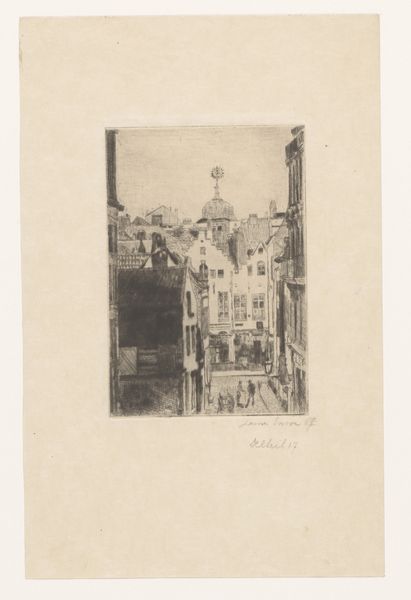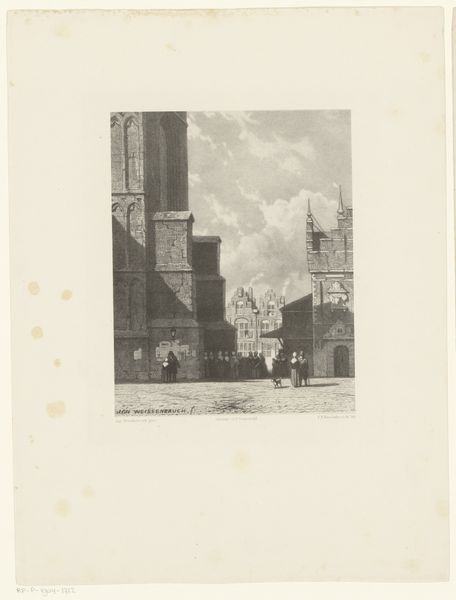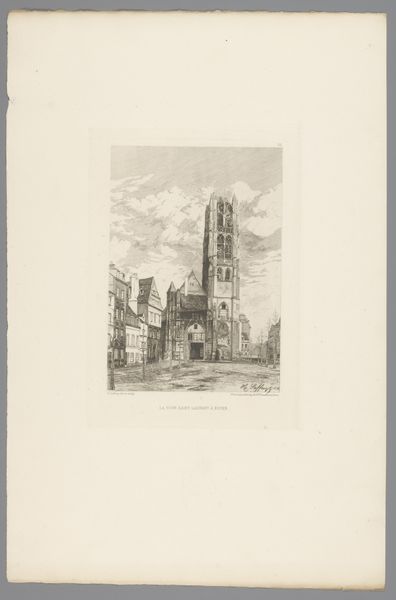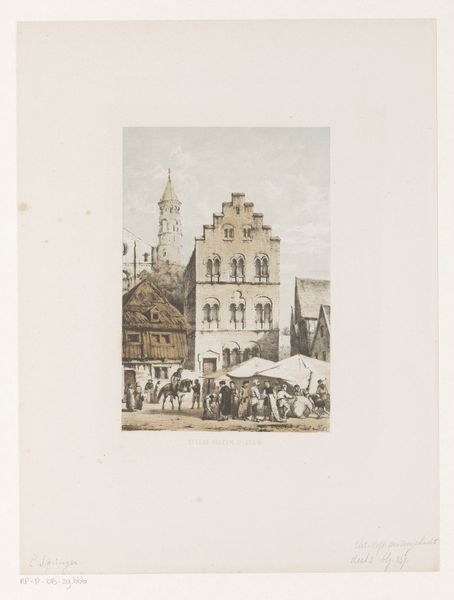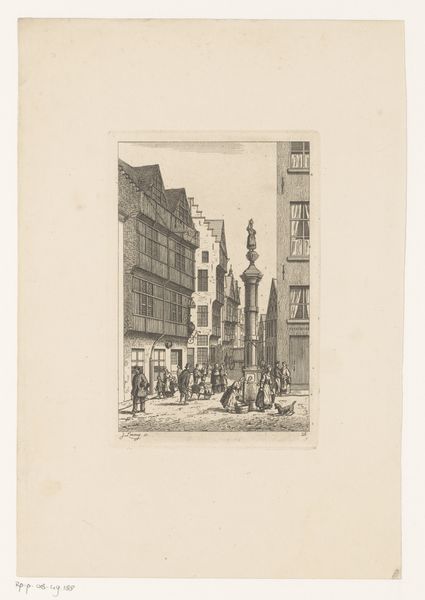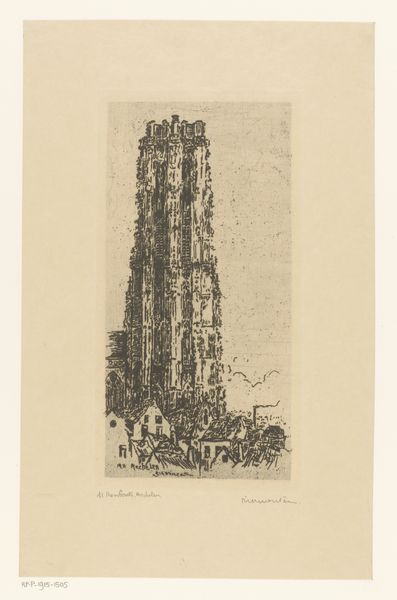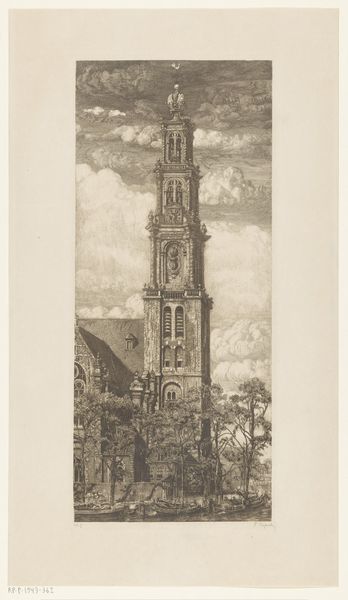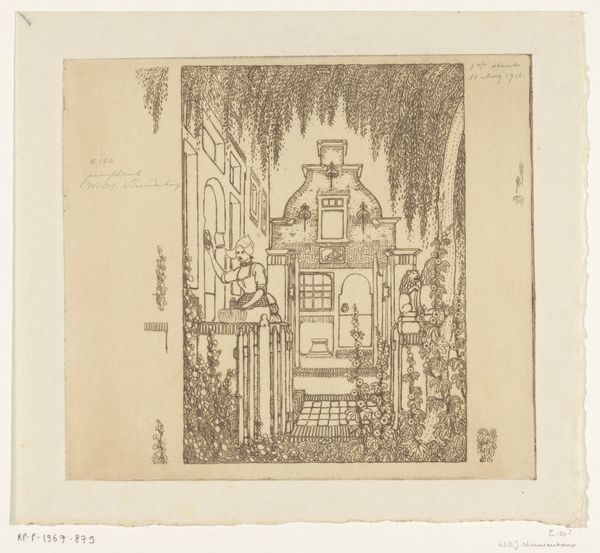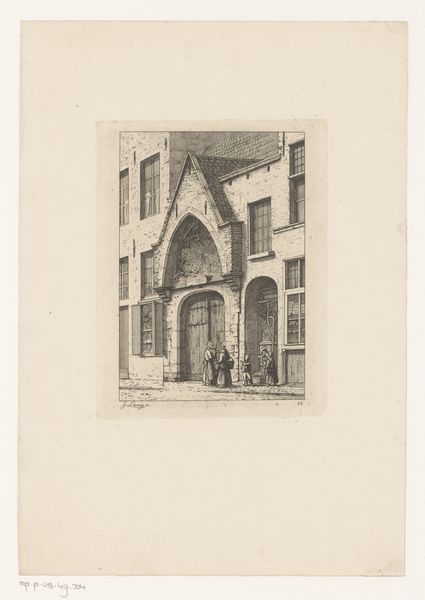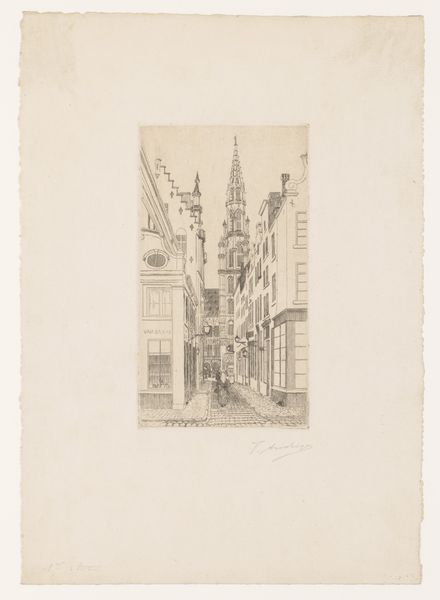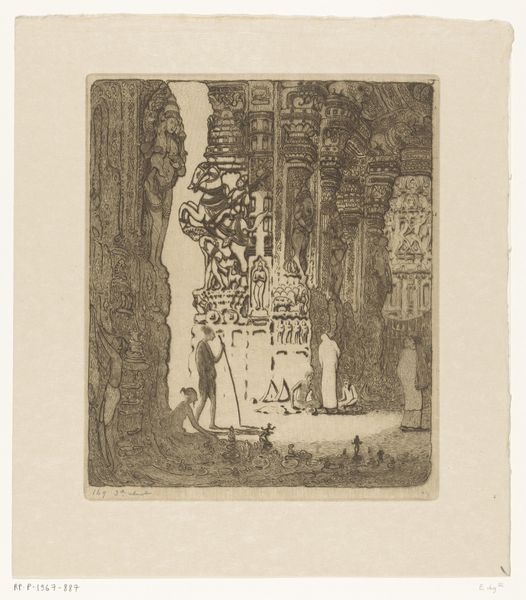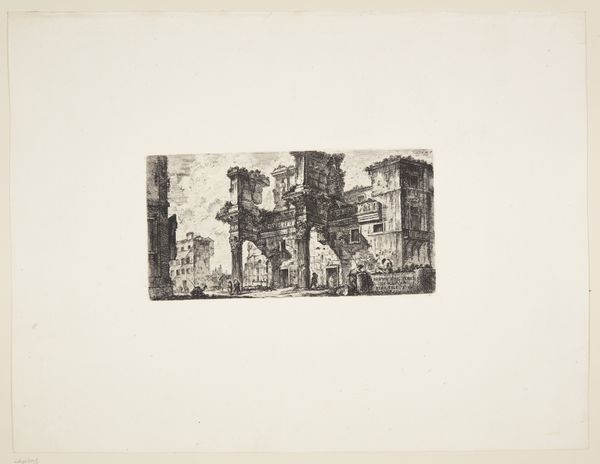
drawing, print, etching, paper, ink
#
drawing
# print
#
etching
#
paper
#
ink
#
cityscape
#
genre-painting
#
realism
Dimensions: height 173 mm, width 108 mm
Copyright: Rijks Museum: Open Domain
Editor: This etching from 1868 by Jean Théodore Joseph Linnig depicts "Put van Quinten Massijs op de Handschoenmarkt in Antwerpen", or, "Quinten Massijs' well at the Glove Market in Antwerp." I find the image charming. It’s so detailed, and it captures a sense of everyday life, but with a historical weight given the imposing architecture in the background. What can you tell me about the imagery? Curator: Indeed. The well itself, quite ornate, serves as more than a water source. It represents the cultural memory of Quinten Massijs, a blacksmith turned painter. Notice the intricate ironwork. Does that not evoke the blacksmith's forge? Editor: I hadn’t considered that, but now I see it! The ironwork mimics branches, almost organic, a surprising contrast to the industrial element. Curator: Precisely! Consider how this image transmits cultural values. The well commemorates artistic achievement, a humble blacksmith transforming into a celebrated painter. And consider what sits at the well: gossiping locals and grazing chickens. Why depict the sacred alongside the banal? Editor: Maybe to emphasize how even great artistic achievement remains part of the common world, the daily routines of Antwerp. Curator: An interesting observation. Now, think about the architectural backdrop, the looming cathedral. What emotional associations does that contrast of scale suggest to you? The cathedral looms in the distance but its relevance shrinks due to the activity centered around the well in the market square. Editor: Perhaps it speaks to the relative power of community versus the church, the everyday triumphing? This image seems much more than a simple cityscape. Curator: Exactly. Linnig layers symbols—the well, the cathedral, the market, chickens. And with the knowledge about Quinten Massijs in mind, the artist makes visual connections across time. What have you observed regarding Linnig, and what cultural memory did the etching carry? Editor: I see it now: Linnig isn't just showing us a place, but telling a story about art, industry, faith, and community, all through easily understood symbols and genre painting. It is not only how people interact with an image, but with its associated narrative, and time only seems to amplify that resonance.
Comments
No comments
Be the first to comment and join the conversation on the ultimate creative platform.
